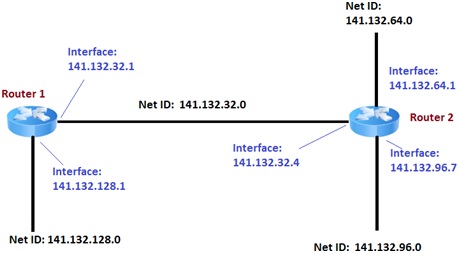Reference no: EM133084266
Problem Sheet
Problem 1. Why networked devices require an IP address?
Problem 2. How many bits constitute an IPv4 address? How IPv4 addresses are normally represented?
Problem 3. What is the role of a DHCP server? How does it know when to carry out that role?
Problem 4. What do we mean by lease time as this term applies to DHCP servers?
Problem 5. What are three mandatory IP settings a machine needs to access remote websites?
Problem 6. How are users inconvenienced if a local DNS server is not working on an IP network?
Problem 7. How to determine the network address from a given IPv4 address and subnet masks?
Problem 8. Fill out the following table that relates subnet masks to CIDR values.
|
Subnet Mask
|
Equivalent CIDR Value
|
|
255.255.255.0
|
|
|
255.255.240.0
|
|
|
|
/18
|
|
|
/21
|
Problem 9. Identify the first IP address of each of the three private IP address ranges.
Problem 10. Describe the role of a router?
Problem 11. The following diagram shows two routers and the associated IP and network addresses.
a. What does an interface entry contain with reference to the provided routing table?
b. What does the next hop entry contain?
c. Complete the routing table for Router 1.
d. Complete the routing table for Router 2.

|
Destination Network
|
Interface
|
|
|
141.132.128.0
|
141.132.128.1
|
141.132.128.1
|
|
141.132.32.0
|
|
|
|
141.132.96.0
|
|
|
|
141.132.64.0
|
|
|
Problem 12. List names of three different routing protocols and describe their operations.
Problem 13. Which of the following fields are present in an IP header?
a. Source IP address
b. Source MAC address
c. Source port number
d. Time to live filed
e. Destination MAC address
f. Packet length
Problem 14. How many IP addresses are in Federation University's IP address range? How did you calculate this number?
Problem 15. If your local DNS server cannot resolve an IP address query, how it will proceed to fulfil the request?
Problem 16. How many bits constitute an IPv6 address?
Problem 17. For the following IPv6 address, calculate:
FE80: 0000: ABC4: 213B: ABBA: FCF2: 1234: 1101
a. How many binary 1s are in FE80?
b. How many binary 0s are in 0000?